Microphones 03
Microphone types
- Video
- Script
Welcome to this tutorial on microphones types.
There are many many different types of microphone including those intended for specific applications such as film and video, live performance, broadcast, and studio based recording and music production.
| Transducer type | Transducer characteristics | Form factor (examples) | Typical uses | Popular models |
|---|---|---|---|---|
| Contact | Picks up mechanical sound wave vibration from an instrument, to which it is in physical contact with. Does not pick-up air pressure sound waves. Requires a specialist pre-amplifier to handle the passive hi-impedance output and to 'recover' a usable signal for audio use. Produces a lower quality signal than almost any other type of mic, but is useful for ergonomic reasons and when a conventional mic is not practical. |
Piezo guitar pick-up (usually mounted beneath the bridge) | Provides a guitar pick-up level signal for amplification. Commonly used for sending a signal from a steel strung acoustic or nylon strung guitar to a PA or guitar amplifier. | Fishman |
| Drum trigger | Used to drive an audio to MIDI converter. The sound of the mic is not heard but instead use to derive a MIDI message which is sent to a MIDI sound module. | Roland RT-10K | ||
| Clip on contact mic | To send a signal from a brass instrument to a tuner. | Korg CM200 | ||
| Dynamic | Moving coil design. Low cost models produce a tailored non-flat frequency response. They often have poor hi-frequency response (above 15kHz). More expensive studio models employ more complex electronics to produce a wider and flatter frequency response. Directional (cardioid) and don't suffer from proximity effect like capacitor mic's. They are also relatively insensitive at distance. Capable of accommodating high SPLs. Robust and good at rejecting feedback. |
Vocal (stage) | Live performance, tailored for human voice frequency response, feedback rejection, low handling noise and resilience to moisture. | Shure SM58 |
| Vocal (studio) | Suitable for loud aggressive rock vocal performance. | Shure SM7 | ||
| Instrument | Electric guitar cabinets, snare drums | Shure SM57, Electro-voice RE20, Sennheiser MD421 | ||
| Bass drum mix | Tailored for high SPL low-frequency response | AKG D112, Sennheiser e902, Shure Beta52A | ||
| Capacitor / condenser | Highly sensitive. Wide flat frequency response, capable of detailed and transparent sound. Bass proximity effect close-up. Switch-able polar patterns. Electronic options available: FET or valve. FET offers greater transparency, whilst valves add harmonic distortion perceived as 'warmth'. Also the presence or absence of transformers can impact a microphones character. Requires external power from a mic pre (phantom) or PSU. Sensitive to condensation. Delicate. |
Studio vocal (large diaphragm) | Produce a detailed and 'larger than life' sound. Popular for vocals. The proximity effect can be used to add body to thinner sounding voices. Not just restricted to vocals, these mics work well on any source. Overheads for drums, brass and orchestral recordings. |
FET .. AKG C414, Rode NT1, Audio Technica AT2035, sE Electronics 4400, Neumann U87, U67 Valve/tube .. Microtec Gefell UM900, Neumann U47, SE Electronics Gemini, AKG C 12 VR, Brauner VM1 |
| Studio instrument (small diaphragm) | Capable of a transparent, flat and wide frequency response. Due to the small size of the diaphragm (low inertia) these mics capture transients well. They have greater dynamic range but higher self noise than large diaphragm models. Excellent for recording almost anything with fast and pronounced transients, including acoustic guitars, hi-hats, string instruments, pianos etc. |
Neumann KM184, AKG C451, SE Electronics SE1a, Rode NT5, Earthworks SR30, DPA 2011C | ||
| Shotgun | Highly directional, rejects signals arriving from the sides so useful for distance recordings such as film location work where positioning of cameras and lights take precedent. | Sennheiser MKH 416, Rode NTG2 | ||
| Stereo | Most examples utilise the coincident x y pair arrangement. Convenient for live recording work. Quick to set-up. Because their diaphragms are close to one another, these types of mics are less flexible than a matched pair of single mics. |
Rode NT4, Audio-Technica AT2022, Audio-Technica AT4050ST, DPA 3521 | ||
| Capacitor / condenser - back electret | Although originally offering inferior performance to 'conventional' capacitor microphones, these types of transducers are now employed in many hi-quality studio mics and exhibit the same characteristics. Also useful for non-recording studio applications where the mic must be extremely small (eg mobile phones, video camcorders). |
Studio vocal (large diaphragm) | (See capacitor/condensor studio vocal) | Audio-Technica AT5040 |
| Studio instrument (small diaphragm) | (See capacitor/condensor studio instrument) | DPA 4090 | ||
| Lavalier | Broadcast, TV presenter/announcer | RØDE Lavalier, Sennheiser ME2-US, AKG C417 | ||
| Built-in consumer (mobile phone, camcorder etc). | - | - | ||
| Ribbon | A ribbon transducer is called a "motor". Flat frequency response up to 15kHz, above which their sensitivity drops dramatically. Pronounced proximity effect. Most models have a figure of eight polar pattern. Many models produce a low output. |
Studio mic | Guitar cab mic'ing. Drum overheads. Saxaphone. |
AEA R84, Royer Labs R121, Bumblebee Audio RM-5, SE Electronics R1, Coles 4038 |
It is possible to categorise microphones in a number of ways, for example according to the electronic design of their transducers, or their form factor, or their intended applications.
However, in this video we will simply summarise the most common types and their individual design rationale, tonal characteristics and recording applications. We will start with types not normally used in the recording studio and end with the three types that are, namely studio dynamic, studio capacitor and ribbon.
Caption - Contact microphones
Contact mics, also known as pick-up or piezo mics, are used primarily to amplify acoustic instruments in live performance.
A common example is a piezo pickup mic fitted to the bridge of an electro-acoustic guitar.
They pick up sound vibrations typically from the body of an instrument and process the signal though a specialist pre-amplifier to produce an acceptable quality of signal. They are small and unobtrusive and allow a performer to move freely around the stage but cannot reproduce the complete timbre of an instrument accurately.
Caption - Lavalier microphones
Most lavalier mics employ a miniature back electret transducer and are designed to be small and unobtrusive. They are primarily used by television announcers and video presenters. They are rarely used in the recording studio.
Caption - Shotgun microphones
Shotgun mics are primarily used for video and film where it can be challenging to place a mic close to the action. They can pickup sound from a very narrow range of angles over a long distance. Placing microphones close to a source is rarely a problem in the studio so shotgun mics are almost never used for studio recording.
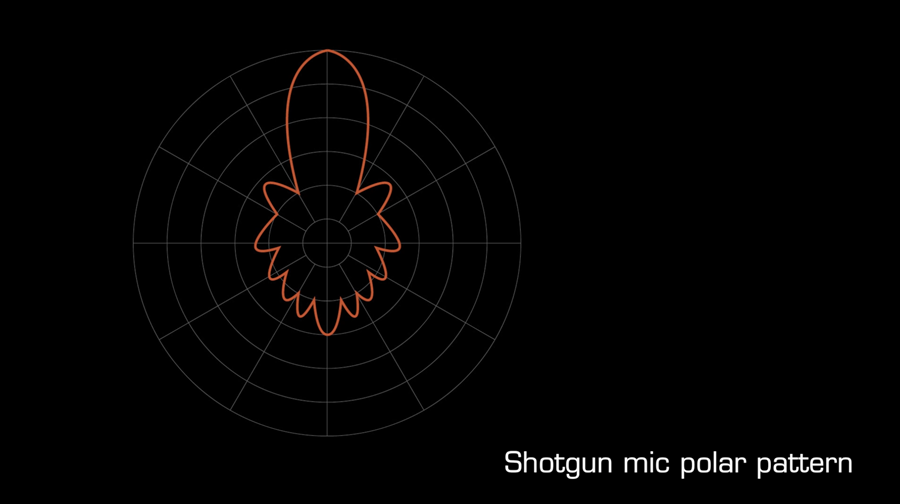
Caption - Live performance hand held dynamic microphones
Dynamic microphones are favoured by most singers for live performance due to their extreme cardioid directionality, lack of handling noise, general robustness and because they do not require phantom power.

Dynamic microphone optimised for live performance are designed to emphasise the frequency range inhabited by the human voice and minimise the feedback from the PA system.. They are not generally used in the studio because the sound they produce can lack hi frequency detail and transparency.
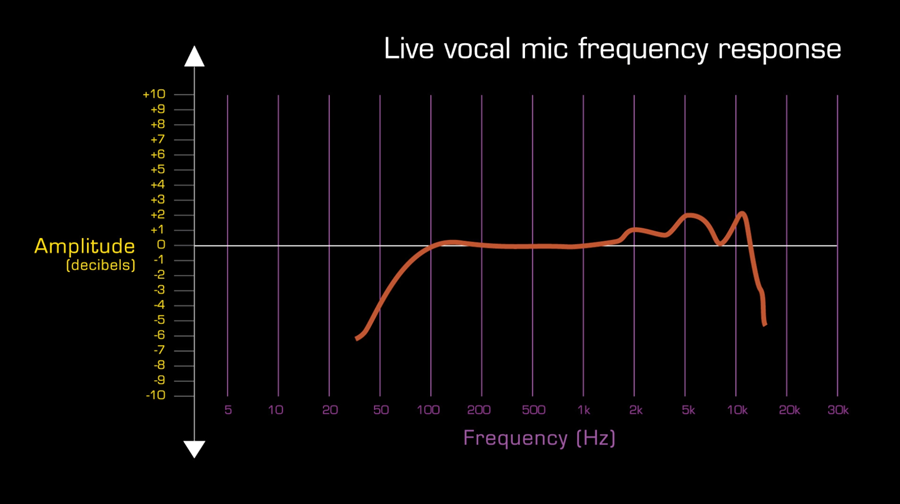
Caption - Live performance hand held capacitor microphones
Manufactures are increasingly developing hand held capacitor microphones which have the ergonomic and practical characteristics of hand held dynamics but with an improved frequency response. There are few compelling reasons to favour these kind of mics over conventional studio capacitor mics.
Caption - Studio dynamic microphones
Due to their ability to withstand high sound pressure levels, studio dynamic mics have traditionally been used for recording electric guitar cabinets, snare and bass drums. Like their live performance counterparts, they lack high end detail, but this is rarely an issue with these kinds of sources.
Dynamic microphones are covered in greater detail in a separate video tutorial.
Caption - Studio capacitor microphones
Studio capacitor microphones are capable of the widest and flattest frequency response of all microphones and can capture incredible detail. They are favoured for a wide range of applications. Many models have switch-able polar patterns making them excellent all rounders and the first choice for those with a limited budget.
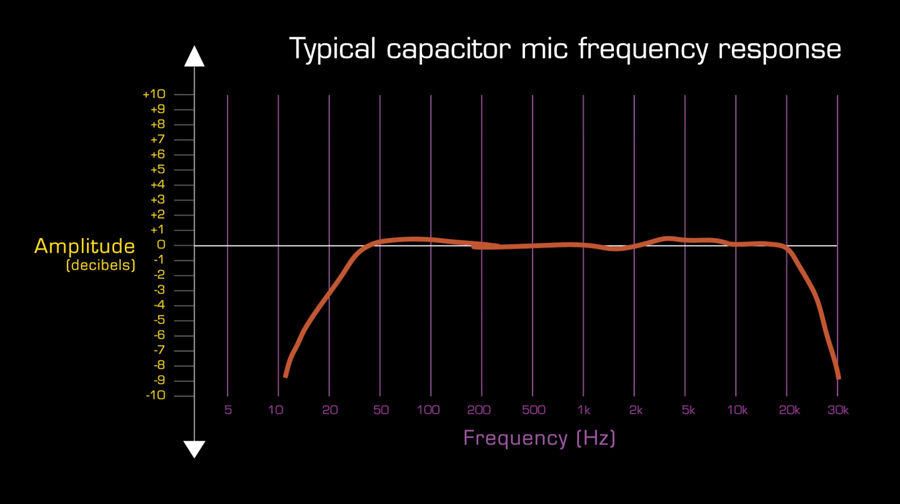
Models with large diaphragms are preferred for recording vocals because they can produce a larger than life sound which flatters many singers, but they are also used for a wide range of other sources and as overheads.
Small diaphragm designs excel at reproducing sound with transparency and detail and are also used for a wide range of applications.
There are no rules about how capacitor mics should be used and experimentation is encouraged.
Capacitor microphones are covered in greater detail in a separate video tutorial.
Caption - Studio stereo capacitor microphones
Although available, stereo microphones are not often used in the studio, most engineers preferring to use two matched mono capacitor or ribbon microphones arranged so as to pick up a stereo image. A typical application is for drum overheads and orchestral recordings in acoustically sympathetic rooms.
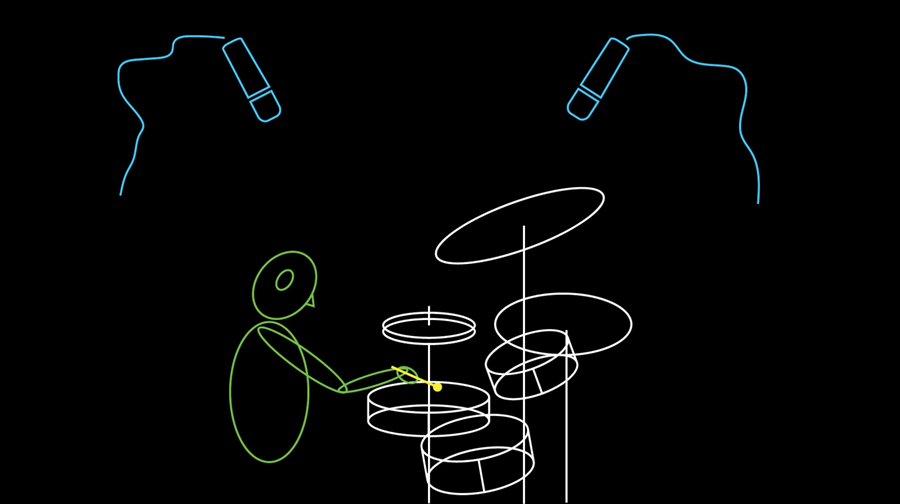
There are a number of popular techniques for recording a stereo image with multiple mics including ..
- middle and side
- coincident XY pairs - employing cardioid or figure of eight directionality
- and spaced omni’s
Caption - Studio ribbon mics
Before quality capacitor microphones became widely available in the 1950s, ribbon microphones were the first choice of professional recording engineers. They are favoured for their smooth and flat mid range frequency response up to 15kHz, above which their sensitivity drops dramatically.
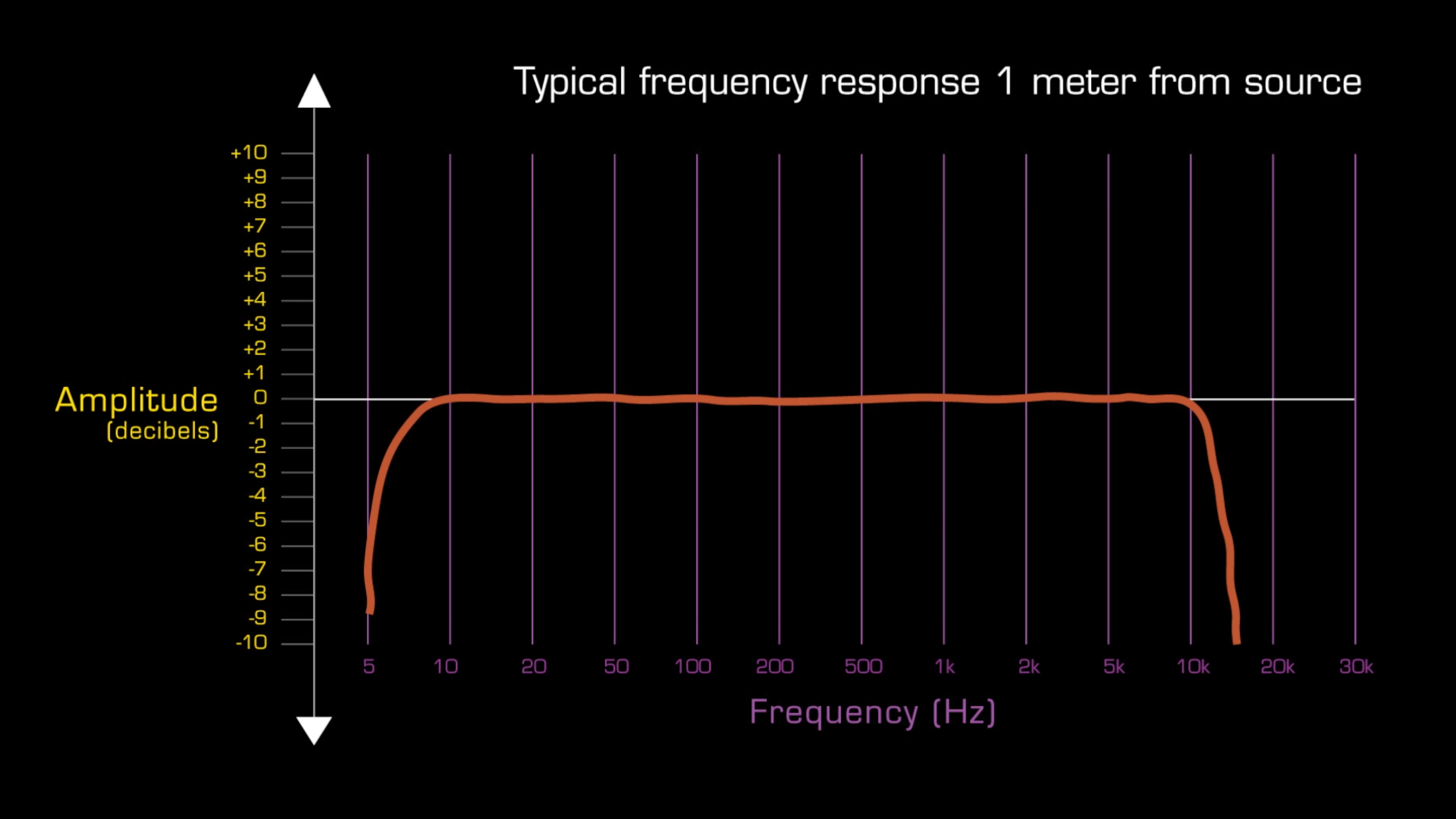
They can be useful for taming excessively trebley sources or recording instruments without high frequency detail such as electric guitar cabinets and brass instruments.
Ribbon microphones are covered in greater detail in a separate video tutorial.
Caption - Thanks for watching
The script for this video, with accompanying images, can be found at projectstudiohandbook.com
We suggest you subscribe at our YouTube channel, and join our mailing list at our website to receive notification of new videos, blog posts and subscriber only extras.
Thanks for watching.